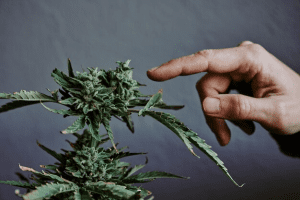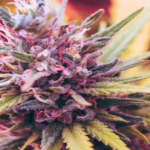If you’re dealing with chronic pain, you’re not alone. You may not know, but more than 7.6 million people in Canada, which means one in five, live with chronic pain at some point in their lives.
Most individuals find that pain affects their daily activities significantly.
Chronic pain impacts people of all ages and backgrounds in Canada. However, those effects can vary widely among different groups.
The good news is that some people consider using cannabis for pain relief.
Many report that strains of cannabis with a balanced amount of THC and CBD can help ease chronic pain.
Research also suggests that caryophyllene, a terpene in cannabis, might help reduce pain.
Since everyone’s response to pain and cannabis can be different, it’s best to start with a low dose and gradually adjust to see how it works for you.
How is Chronic Pain Treated in Quebec, Canada?

If we talk about Quebec, it is a Canadian province with 8.6 million people spread across a vast area of 1.7 million square kilometers.
The territory is large with six remote regions far from major cities like Montreal and Quebec City. However, only 10% of Quebec’s population stays in these areas.
So, organizing and providing healthcare can be extremely challenging due to limited funds, logistics, and staffing.
Even people living in these areas don’t get the care they need compared to those in urban areas, where access is generally easier.
Key factors affecting healthcare access include –
- Availability of services,
- How well services fit local needs,
- Affordability, and
- How acceptable they are to patients.
Did you know only 8% of Canadian doctors work in the 18% of the population living in remote areas? It’s quite surprising that health services are scarce and spread out, often requiring long travel for residents to get the care they need.
Considering that people in these remote areas are often older and not rich enough in terms of money and health, the location of residence and access to care play significant roles in their overall health.
When treating chronic pain, of course, there are a lot of approaches that work the best.
It includes medication, physical therapy, and psychological support.
However, when it comes to remote areas, it can be difficult to access specialized pain clinics and non-medication treatments.
However, there are seven key aspects they consider:
- Use of prescribed and over-the-counter pain medications,
- Non-medication treatments,
- The use of both treatment approaches,
- Access to trusted healthcare professionals,
- Problems with multiple medications
- The use of cannabis for pain relief.
All these differences can help improve healthcare services in remote regions.
Things You Need to Consider When Consuming Cannabis in Quebec

You all know that recreational cannabis was legalized in Canada in 2018. However, “legalized” does not mean everything is LEGAL. Here are some basic rules that you should know –
1. Cannabis is illegal for anyone under 21
You need to be cautious when sharing cannabis with others. In Quebec, it’s illegal to buy cannabis for anyone under 21 or to share it with them.
2. Consumption of Cannabis at home is legal, but your landlord can say no
If you’re renting a room or home, your landlord can prohibit you from using cannabis inside your residence when you sign your lease.
They can also change the terms of your lease. For a 12-month lease, the landlord must notify you three to six months before your lease is up for renewal.
3. You can’t grow cannabis at home in Quebec
In Quebec, unlike some other provinces, you are not allowed to grow cannabis plants at home. If you’re caught with a cannabis plant, you could face a fine.
4. You can’t use cannabis in public
In Quebec, you’re not allowed to use cannabis (whether vaping, smoking, etc.) in public places.
It includes all outdoor areas like –
- Day camps,
- Playgrounds,
- Parks,
- Sports fields, and
- Summer camps.
It also applies to public roads, such as
- Sidewalks,
- Streets,
- Alleys,
- Highways,
- Footpaths,
- Bus shelters, terraces, and other outdoor commercial spaces.
Additionally, you can’t smoke cannabis on a bike or in a car, even if it’s parked and you’re not driving.
5. It is Prohibited to consume cannabis and drive
Driving under the influence of cannabis is illegal. If you have more than a certain amount of THC (the active ingredient in cannabis) in your blood while driving, you could be charged with a crime. The severity of the charge depends on the amount of THC detected in your system.
So, What Do You Need to Know About the Use of Cannabis in Quebec?

In 2023, about 17% of people in Quebec aged 15 and over had used cannabis, but in 2022, it was up to 19%.
Surprisingly, there was also a drop in usage among those aged –
- 15 to 20 (from 25% to 23%) and
- 35 and older (from 14% to 12%).
The Québec Cannabis Survey (QCS), conducted from February to July 2023 with 13,209 participants. The aim was to track changes in cannabis use in Quebec.
The survey looks at various aspects, including –
- how people use cannabis,
- why they use it,
- where they get it from,
- potential risks of unwanted misuse,
- social attitudes, and
- perceptions about cannabis.
How does cannabis help with pain?
Cannabis contains compounds that may help relieve pain, nausea, and other symptoms. The two main components of cannabis often studied for pain relief are cannabidiol (CBD) and tetrahydrocannabinol (THC).
Does THC help with pain?
THC is similar to the natural chemicals in the body called cannabinoids. When people consume THC, it interacts with the brain’s cannabinoid receptors.
This triggers the brain’s mesolimbic system and lowers pain levels. THC is psychoactive, meaning it creates a “high” by binding to these receptors.
On the other hand, CBD doesn’t cause a high. However, it may connect with pain receptors in the brain to help reduce pain and inflammation.
Frequently Asked Questions
What type of cannabis is best for chronic pain?
The Cannabis strains can help with sedation, pain management, and sleep.
Is cannabis or CBD better for pain?
You can consider a combination of CBD and THC that works effectively to treat the pain.
Who shouldn’t take CBD?
CBD can cause harm to an unborn baby. Further, if you have liver disease, you should avoid its intake.
Is it OK to consume CBD every day?
CBD routines work best when you regularly add them to your everyday lifestyle.

 DISCORD
DISCORD
